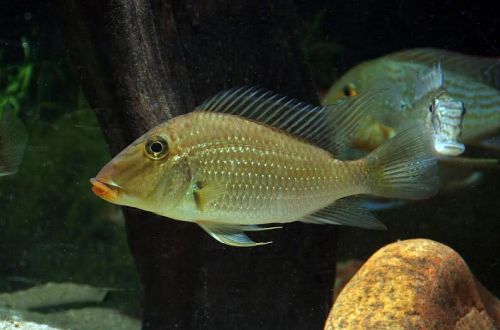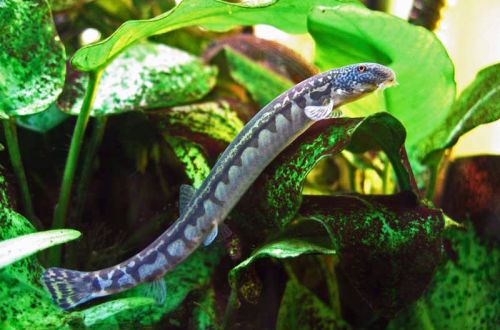
Axelrod’s iris
Axelrod’s iris or Melanotaenia herbertaxelrodi, scientific name Melanotaenia herbertaxelrodi, belongs to the Melanotaeniidae family. Beautiful and unpretentious fish, easy to keep and breed, compatible with many other species. All this makes it a good choice for a general freshwater aquarium.

Contents
Habitat
It comes from what is now Papua New Guinea. Endemic to Lake Tebera (Lake Tebera), located in the central part of the country among the mountain heights. The area of the lake is about 20 km². Most of it is occupied by swampy areas with dense aquatic vegetation. It is in them that these fish prefer to be.
Brief information:
- The volume of the aquarium – from 90 liters.
- Temperature – 20-26°C
- Value pH — 7.0–8.0
- Water hardness – medium hardness (10-15 dGH)
- Substrate type – any
- Lighting – subdued / moderate
- Brackish water – no
- Water movement – weak/absent
- The size of the fish is up to 9 cm.
- Food – any food
- Temperament – peaceful active
- Keeping a flock of at least 6-8 individuals
Description
Adults reach a length of about 9 cm. The color is yellow with a pronounced dark horizontal stripe. The fins and tail are colored red. During the spawning period, males show a blue or white stripe stretching from the head to the beginning of the dorsal fin. Sexual differences are insignificant, females are only slightly inferior to males in size and brightness of color.
Food
Omnivorous and undemanding to the diet, it accepts popular dry, frozen and live foods. It is worth remembering that a varied diet of quality products directly affects the brightness of the color.
Maintenance and care, decoration of the aquarium
Comfortable conditions for a flock of 6-8 fish can be created in a tank of 90-100 liters. The design should include areas with dense vegetation along with open areas for swimming. The lighting level is subdued. In bright light, you will need to purchase floating plants that will create the necessary shade.
Maintaining high water quality is key to keeping Axelrod’s rainbows. In most cases, it is enough to install a productive filtration system and replace parts of the water (15-20% of the volume) with fresh water weekly to maintain the necessary water conditions.
Another important aspect is the movement of water in the aquarium. It is necessary to minimize the internal flow, which can cause unnecessary discomfort to the fish.
Behavior and Compatibility
Peaceful and active fish, get along well with species of similar size and temperament. Keeping a flock of at least 6-8 individuals of both sexes. No intraspecific conflicts were noted.
Breeding / breeding
Breeding is quite simple and can be carried out in a community aquarium. Favorable conditions for spawning are: slightly alkaline water of medium hardness, temperature 22–24°C, the presence of thickets of small-leaved low-growing plants or their artificial analogues. The mating season lasts about 2 weeks. During this time, the female lays a small number of eggs daily among the plants, and the males fertilize them.
Parental instincts are not developed. Fish do not care about their offspring, although they do not pose a threat to them. However, other fish can eat caviar and fry. Fertilized eggs should preferably be moved to a separate tank with identical water conditions.
The incubation period lasts from 7 to 12 days. In the first days of life, the fry feed on the remains of the egg sac, then they switch to microscopic food, such as ciliates. Starting from the second week, Artemia nauplii or special powdered food for juvenile fish can be fed.
Fish diseases
Health problems arise only in case of injuries or when kept in unsuitable conditions, which depresses the immune system and, as a result, provokes the occurrence of any disease. In the event of the appearance of the first symptoms, first of all, it is necessary to check the water for the excess of certain indicators or the presence of dangerous concentrations of toxic substances (nitrites, nitrates, ammonium, etc.). If deviations are found, bring all values back to normal and only then proceed with treatment. Read more about symptoms and treatments in the Aquarium Fish Diseases section.





